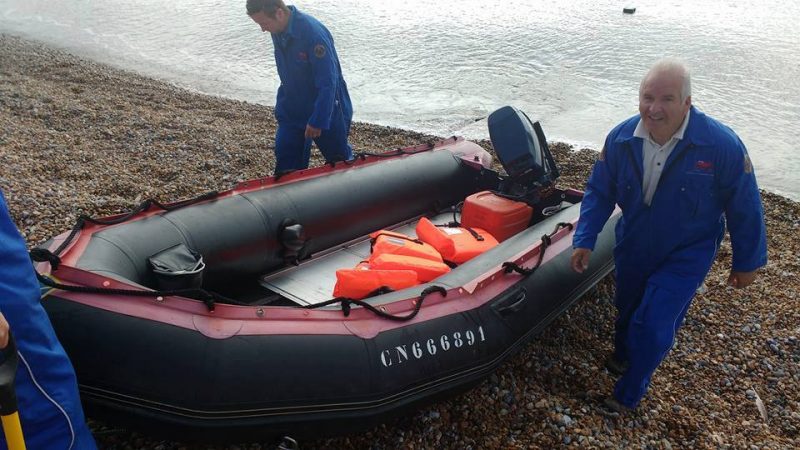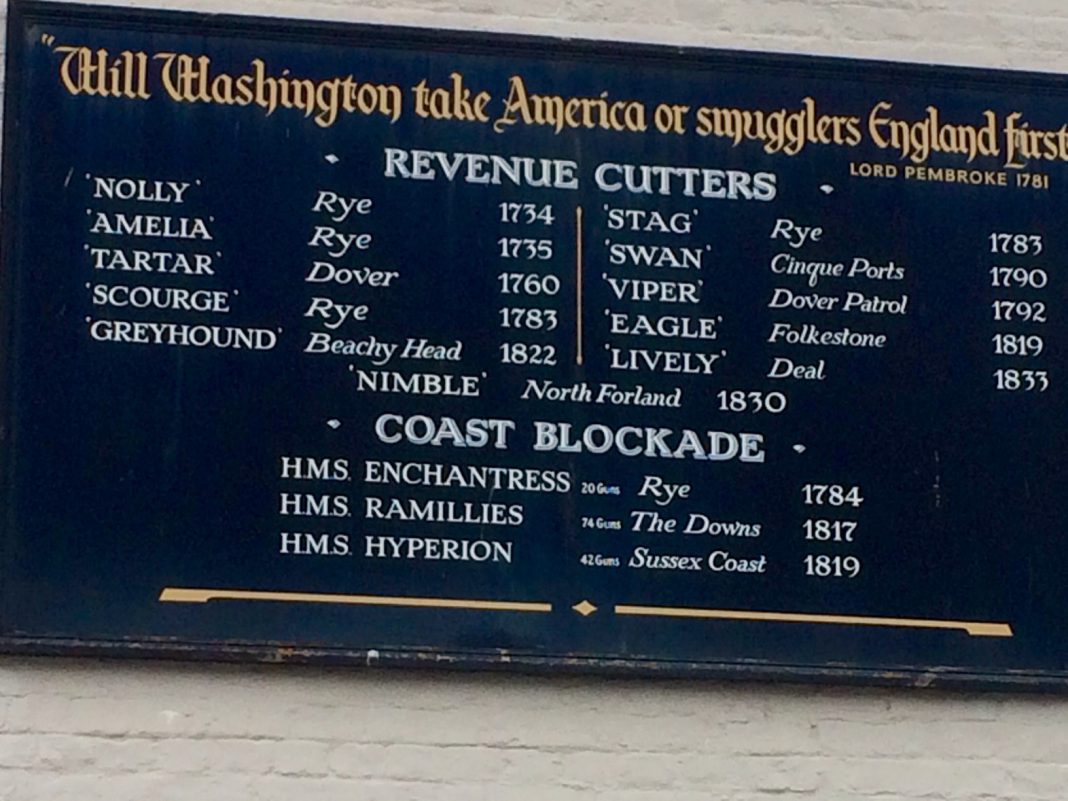Smuggling was no stranger to Rye in the past (from the 15th century onwards) and nor were refugees. But the resources being directed at people smuggling today seem somewhat less.
At present, the government’s Border Force has only five cutters to patrol the whole of the UK (some 7,700 miles of coastline. One of these one is in dock and another is in the Mediterranean, on loan to Europe and based between Greece and Turkey to help tackle people smuggling there.
By comparison the short stretch of coast from the North Foreland (Margate) to Beachy Head (Eastbourne) had fourteen vessels (including three from the Royal Navy) dealing with smuggling over the hundred year period, 1734 to 1833 (as listed in the photograph above of the Ship Inn).
Four of the revenue cutters (Nolly, Amelia, Scourge and Stag) were based in Rye, as was HMS Enchantress from 1784.
In May this year the government said more Border Force boats were on order, with possibly half a dozen smaller 20 metre patrol ships coming on line over the next two years. These are said to be more nimble than the cutters in dealing with very small boats crossing the Channel, which may mean they will be inflatables or semi-inflatables (RIBS) as used in lifesaving and by special forces.

The grand total though will still be far less than the resources available to Greece and Italy who are reported to have 240 and 600 boats patrolling their respective coastlines of 8,497 and 4,722 miles.
The current five UK cutters were all built fairly recently, with Seeker built in 2001; Searcher in 2002; Vigilant, 2003; Valiant, 2004 and the most recent, Protector, in 2014. Much of their recent focus has been on drugs smuggling with over £80 million of drugs confiscated between 2010 and 2013.
However, though no precise figures can be put on successful attempts, people smuggling in small boats is increasing with two rescues in mid Channel in recent months, including a group of six rescued from a sandbank near Dover, one group arrested at Winchelsea Beach and another group near Eastbourne and at least eight interceptions of smugglers in the Channel since March.

Smuggling though was never easy to deal with because it was a way of avoiding taxes. Wool was smuggled out of England and tea, spirits and cigarettes were smuggled in. So it took the involvement of the Navy – as well as changes in some taxes and public attitudes, in the 19th century – to bring it mainly under control.
Dover’s Member of Parliament has already called for Navy involvement in addition to the Border Force to tackle people smuggling. Temporary camps of refugees at Calais and Dieppe are frequently in the news as migrants look for new ways to cross the Channel.
Religious conflicts across the Channel in the 16th century resulted in many (mainly Huguenot) refugees arriving in Rye, often in small boats. In 1582 that number reached around 1,500 – a lot for one small town, even though it was then still a significant port.
Smuggling was also an important part of the local economy, and was for some centuries, given how close France is. Forthcoming articles in coming weeks in Rye News will look at both refugees in Rye, and smuggling as big time “Organised Crime”.
The Border Force is therefore just facing an old challenge – but in a new form – and maybe the past provides some lessons – one of which is that more ships will probably be needed, with greater co-ordination of all available resources.
Photos: John Minter and Rye News library
Image Credits: John MInter , Carol Macdonald .



